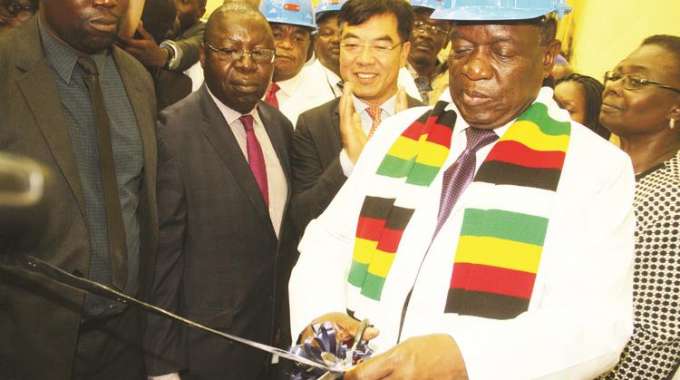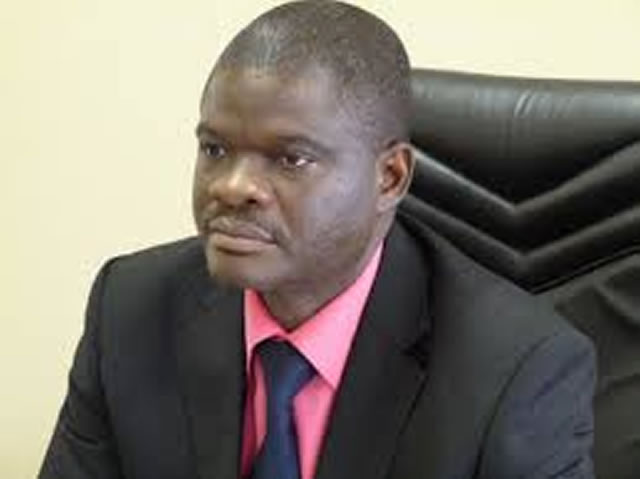UPDATED: ED commissions $533m Kariba project

From Sydney Kawadza in Kariba
President Mnangagwa yesterday commissioned and switched on the $533 million Kariba South Power Station Extension Project which adds another 300 megawatts to the national grid. The newly-commissioned Units 7 and 8 will reduce Zimbabwe’s 600MW import bill.

President Mnangagwa said the completion of the Kariba South Power Station Extension Project was testimony to Government’s commitment to addressing Zimbabwe’s energy requirements while boosting economic productivity.
The project, he said, would also ensure access to power for a broader section of the population.
He was accompanied by his two deputies, Vice Presidents General Constantino Chiwenga (Retired) and Kembo Mohadi.
Also in attendance were Energy and Power Development Minister Simon Khaya Moyo, Water, Environment and Climate Minister Oppah Muchinguri-Kashiri, Tourism and Hospitality Industry Minister Prisca Mupfumira and Finance Minister Patrick Chinamasa.
Other ministers included Justice, Legal and Parliamentary Affairs Minister Ziyambi Ziyambi, Minister of State for Provincial Affairs for Mashonaland West Webster Shamu and Special Advisor to the President Ambassador Christopher Mutsvangwa.
Addressing officials, President Mnangagwa said he was happy to see the fruition of a concept mooted in Harare.
“I am extremely and pleasantly surprised and grateful that from a mere concept in a room in Harare, Government decided to have this Kariba South Extension. Today we are seeing the actualisation of that concept,” he said.
He hailed the co-operation between Zimbabwean and Chinese workers who worked together on the project.
“It is a great wonder. It tells you what we can achieve as a Government in collaboration with our domestic institutions as well as the importation and collaboration with our partners to access technology from friends of the country,” he said.
In his official address, President Mnangagwa said the milestone addition of 300MW into the national grid resonates with the aspirations of the UN Sustainable Development Goal No. 7.
The SDG aspires for affordable, reliable, sustainable and clean energy.
He said Government realised the need to leapfrog economic development and catch up with the rest of the world following stunted growth due to years of isolation and illegal sanctions.
“Currently, the average maximum daily power demand is about 1 600 megawatts, against a backdrop of an average internal generation capacity of about 1 200 megawatts resulting in a deficit in supply of about 600 megawatts, which is met through importation.
“The 300 megawatts, comes at an appropriate time as it significantly reduce the power supply deficit and positively impact on our national energy import bill.”
President Mnangagwa said Government had also opened up the energy and power development sector to the participation of private players under an independent and all-encompassing energy regulator ensuring an even playing field for all stakeholders.
“I, thus, invite both domestic and foreign investors to seize the opportunities in the energy sector to increase our alternative source of power.
“I equally exhort the respective users of energy to develop innovative strategies and energy sources to augment power supplies from the national grid,” he said.
He also appealed for increased investment and use of solar energy with Zimbabwe having an average solar radiation of 20 megajoules per square metre.
“This solar radiation profile counts among the best in the world and can be used for power generation, water pumping, domestic, institutional lighting as well as water heating.
“In addition, there is immense potential for small hydro-power stations across rivers and various water bodies in the country which have an estimated 120 megawatts generation capacity.
“Equally, the biogas potential in the country is enormous, considering the agro-based structure of the economy.”
President Mnangagwa said Government was also exploring efficient technologies to exploit Zimbabwe’s vast coal resources.
“We are equally keen to exploit the country’s Coal-Bed Methane resources, which is the largest reserve in the region estimated at 765 billion cubic metres, with deposits mainly located in the Lupane-Hwange area,” he said.
The President also called the Rural Electrification Agency to scale up its operations while expediting its programmes for increase access to electricity in the rural areas.
“It is disheartening that access to modern energy is currently skewed, with 80 percent of the urban areas having access to electricity against a token 14 percent in rural communities.”
He said Government remains committed to enhance efficiency and stability while extending transmission and distribution grid to new areas through modernising and revamping infrastructure.
President Mnangagwa said Government would continue to employ short to medium term measures to improve power supplies in Zimbabwe.
The short-term plans, according to the National Energy Policy, includes refurbishing of existing generation assets while the mid-term plans will see the generation expansion of Hwange with a further 600MW.
“Government has also lined up other projects to cater for the country’s long-term energy needs. Among these is the Batoka Gorge Hydropower Station which has the potential of adding over 1 000 megawatts onto the national power grid once completed,” President Mnangagwa said.
He issued a stern warning against stealing and vandalism of ZESA property and transmission lines.
“We will not hesitate to bring the culprits to book and impose stiffer penalties to deter such retrogressive activities,” he said.
The Kariba South Hydro-Power Station was commissioned in 1962 with an installed capacity of 666MW and subsequently upgraded to 750MW.
The power station’s extension project brings the Kariba South Power Station’s total capacity to 1 050MW.










Comments